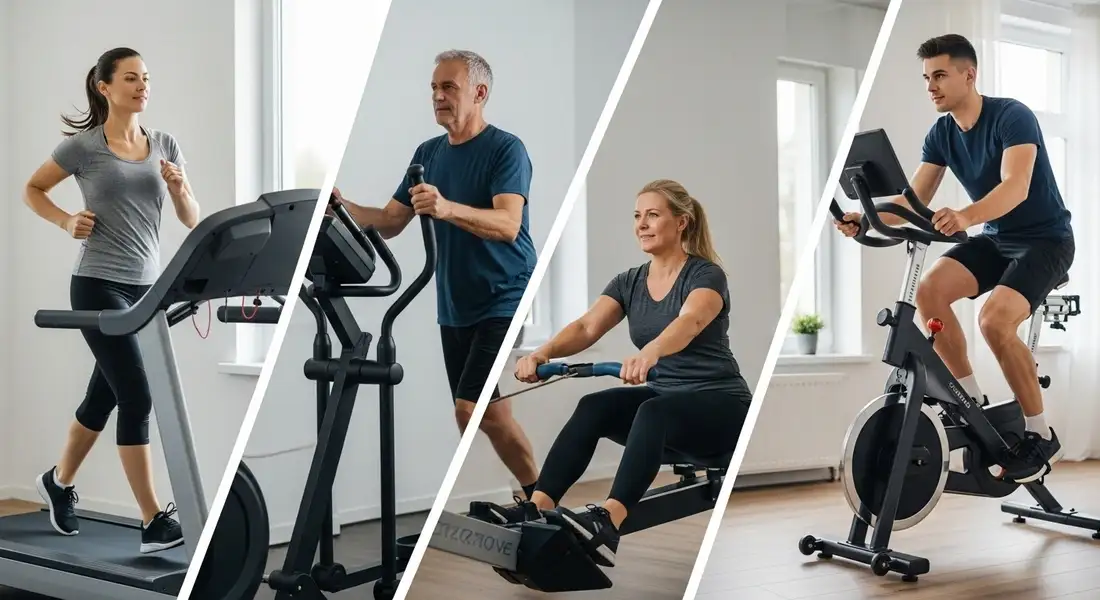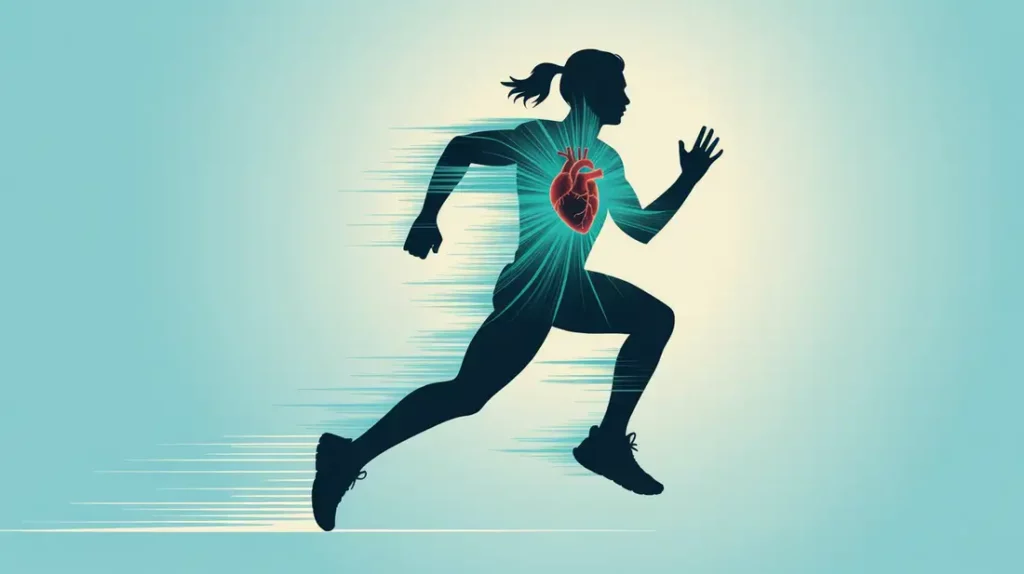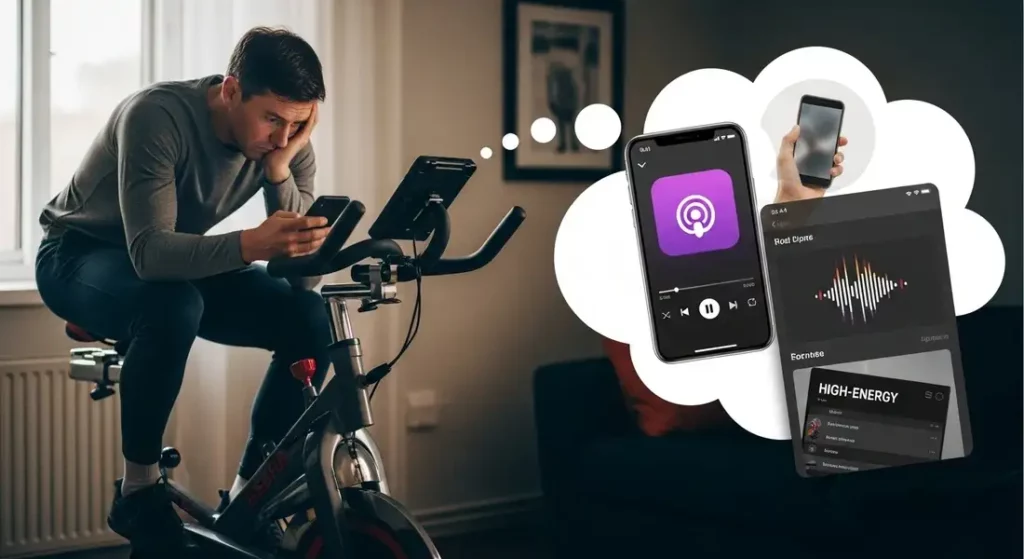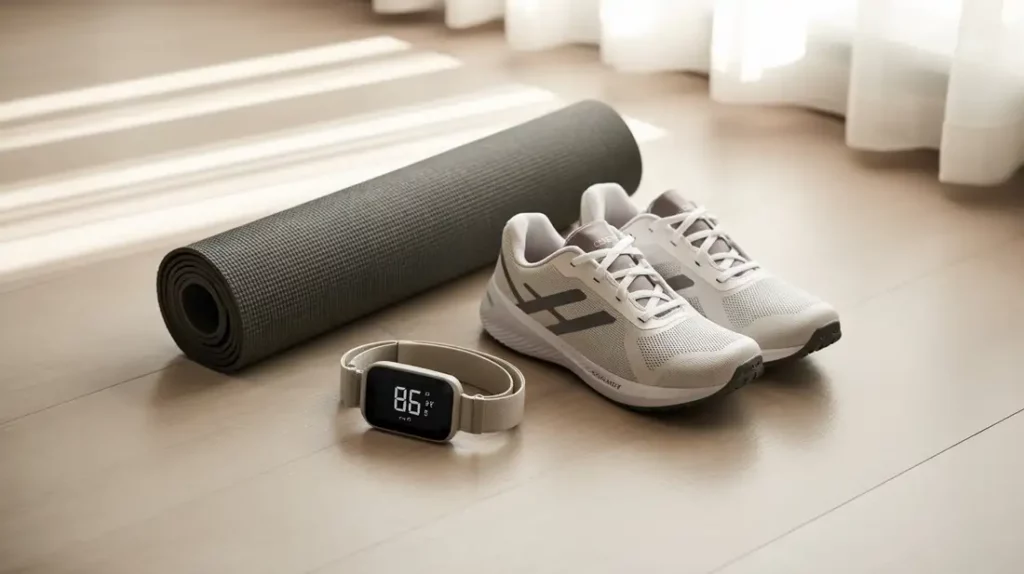Welcome to the first deep dive in our Beginner’s Guide to Weight Loss at Home.
We’ve established that cardio is a cornerstone of burning calories, but the question remains: which machine is the right tool for the job?

The endless options for home cardio equipment can be overwhelming, leaving you wondering where to even start.
As your coach, my goal is to simplify this for you.
This guide will break down the most popular and effective home equipment for cardio for weight loss.
We’ll compare them based on what truly matters to a beginner: joint impact, budget, space, and overall effectiveness.
By the end, you’ll have the confidence to choose the perfect machine to kickstart your journey.
Why Cardio is a Non-Negotiable for Weight Loss
When you perform cardiovascular exercise, you elevate your heart rate, forcing your body to tap into its energy stores (including fat) to fuel your movement.

This process is the engine of weight loss. But the benefits go far beyond the scale.
According to the American Heart Association, regular cardio also leads to a stronger heart, increased stamina, and a significant mood boost.
The “Best” Equipment is the One You’ll Consistently Use
The single most important factor for success is consistency.
The best machine for you is the one you enjoy enough to use week after week.
We’ll compare the top contenders based on impact level, budget, space, and muscle engagement.
Top Home Cardio Equipment – A Head-to-Head Comparison
1. The Treadmill – The All-Around Classic
The treadmill is the most recognizable piece of cardio equipment for a reason. It allows for one of the most natural forms of human movement: walking.
- Pros:
- Intuitive: Everyone knows how to walk. There’s virtually no learning curve.
- Versatile: You can easily adjust the speed and incline to keep challenging yourself, from a gentle walk to a high-intensity hill climb.
- Weight-Bearing: The act of walking helps improve bone density.
- Cons:
- Impact: Running can be high-impact and tough on the knees for some.
- Footprint: They are often large, heavy, and not easily stored.
- Best for: Beginners who want a straightforward workout, people who love walking or running, and those with dedicated space.
2. The Elliptical Trainer – The Low-Impact Hero
The elliptical provides a fantastic workout without the jarring impact of running, making it a favorite for those with joint concerns.
- Pros:
- Extremely Low-Impact: Your feet never leave the pedals, protecting your joints.
- Full-Body Workout: The moving handlebars engage your chest, back, shoulders, and arms.
- High Calorie Burn: The combination of upper and lower body movement torches calories effectively.
- Cons:
- Unnatural Motion: The movement can feel awkward to some at first.
- Best for: Anyone with joint pain, beginners looking for a safe starting point, and seniors.
Related Reading: Elliptical Workouts For Weight Loss: Strategies To Burn Max Calories
3. The Rowing Machine – The Full-Body Furnace
Often overlooked, the rowing machine is arguably one of the most efficient cardio machines you can own.
- Pros:
- Total Body Workout: It engages over 85% of your body’s muscles, including your legs, core, back, and arms, in every single stroke.
- Low-Impact: It’s a seated exercise, removing all stress from the knees and ankles.
- Combines Cardio & Strength: It builds muscle while elevating your heart rate, boosting your metabolism.
- Cons:
- Requires Good Form: You must learn the proper technique to prevent back strain.
- Can Be Noisy: Depending on the type (air rowers are loudest).
- Best for: Those seeking maximum efficiency and a challenging, full-body workout.
Related Reading: Rowing Machine For Weight Loss: A Proven Strategy
4. The Stationary Bike – The Accessible Workhorse
A stationary bike offers a simple, effective, and often space-friendly cardio option.
- Pros:
- Low-Impact: A great, joint-friendly option for all fitness levels.
- Variety of Models: From upright bikes that mimic road cycling to recumbent bikes that offer back support, there’s a style for everyone.
- Budget-Friendly: You can find quality, affordable models.
- Cons:
- Lower Body Focus: It primarily works your legs, with minimal upper body engagement.
- Best for: Those on a budget, people with limited space, or seniors who would benefit from the stability of a recumbent bike.
Equipment Comparison at a Glance
| Equipment | Impact Level | Avg. Cost | Space Required | Muscle Engagement |
| Treadmill | Medium-High | Medium-High | Large | Lower Body |
| Elliptical | Low | Medium-High | Large | Full Body |
| Rowing Machine | Low | Medium | Medium | Full Body |
| Stationary Bike | Low | Low-Medium | Small-Medium | Lower Body |
Common Cardio Hurdles and How to Beat Them

Choosing a machine is the first step, but staying consistent is where the real work begins. Here’s how to overcome the two biggest obstacles every beginner faces.
Problem: “I get bored easily on cardio machines.”
This is the number one reason people stop using their equipment. The solution is to engage your brain, not just your body.
- Multitask Your Mind: Save your favorite podcasts, audiobooks, or TV shows exclusively for your workout time. This creates a positive feedback loop where you look forward to the activity.
- Use Music Strategically: Create high-energy playlists that motivate you. Many studies show that music can reduce the perception of effort and increase endurance.
- Try Interval Training: Instead of going at the same pace for 30 minutes, alternate between 2 minutes of moderate effort and 1 minute of high effort. The constant change keeps you engaged and is incredibly effective for fitness.
Problem: “I don’t have enough time for a long workout.”
You don’t need an hour to get a great workout. Even 20 minutes can be highly effective if you use the time wisely.
- Embrace HIIT: High-Intensity Interval Training (HIIT) is a game-changer. A 15-20 minute HIIT session (like the interval example above) can be more effective at improving cardiovascular fitness than 40 minutes of steady-state cardio.
- Schedule It: “Finding” time is impossible. You have to “make” time. Schedule your 20-minute workout in your calendar just like a doctor’s appointment. Protect that time.
Coach’s Toolkit – Essential Cardio Accessories

The right gear can make your workouts safer, more comfortable, and more effective.
These are a few coach-approved accessories that are worth the small investment.
- A Good Pair of Cross-Training Shoes: Don’t make the mistake of working out in flimsy sneakers. A quality pair of cross-trainers provides the lateral support and cushioning needed to protect your joints from injury. (Pro Tip: Look for brands like New Balance, Asics, or Brooks on Amazon for reliable, well-reviewed options).
- An Equipment Mat: This is a must-have for any heavy cardio machine. A durable rubber mat protects your floors from scratches, reduces the noise and vibration that can bother your family or neighbors, and prevents your machine from slipping during intense workouts.
- A Heart Rate Monitor: While not essential for day one, a heart rate monitor is the best tool for leveling up your training. It allows you to ensure you’re working in the optimal “fat-burning zone” and not just guessing. A simple chest strap monitor provides the most accurate readings.
Your Final Choice – Listen to Your Body and Your Goals
You are now equipped with the knowledge to make an informed decision. Choose the machine that best fits your body’s needs, your budget, and your space. Then, use the tools and strategies above to stay consistent.
Return to the Beginner’s Guide to Weight Loss at Home to see how to integrate this equipment into a full workout plan.
What is your go-to piece of cardio equipment for a home workout? Let us know in the comments below!
